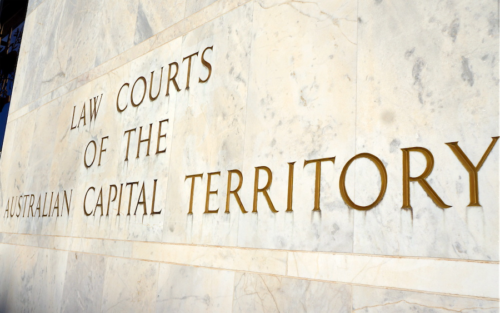
WE have just spent a very enjoyable week visiting your lovely city. Friendly people, interesting galleries, museums, the arboretum and Van Gogh Alive all made for a most enjoyable stay.
We were residing in the Melbourne Building shopping precinct and also wandered around its sister, the Sydney Building.
These buildings are wonderful, with gracious arches, beautiful proportions and simple lines. The pictures of their opening in 1926 show them in their original splendour with hundreds of onlookers and dignitaries clearly appreciating their worth.
Sadly, that is no longer the case. Now their cloisters possess all the ambiance of an unkempt slum.
They are dirty from the city grime and appear not to have been cleaned for decades. The paintwork is old, cracked and riddled with graffiti. Many of the tiles are broken or missing and at times repaired with mismatching colours. One section is even covered with black asphalt!
The corner facades are adorned with large garish advertisements and many of the original doors have been ripped out and replaced with totally inappropriate entrances that detract greatly from the character and charm of the building.
I was really shocked and saddened to see these exceptional historic and cultural icons so neglected and unloved. The buildings themselves are in urgent need of friends who can provide some much-wanted TLC and who fight for their preservation.
My hope is that the community will rally to restore these magnificent, heritage-listed masterpieces to their original glory for their centenary in 2026.
Dr Ian Broinowski, Hobart, Tasmania
Now is the time to cancel the tram
THERE are obvious reasons why traffic-monitoring cameras at strategic locations will achieve absolutely nothing to help motorists avoid congestion when London Circuit is raised at Commonwealth Avenue.
Kings Avenue Bridge, the closest alternative route, has only two lanes and simply won’t be able to cope with the increased volume.
Nor will the slow route from Curtin to Acton via McCulloch Street, Scrivener Dam and Lady Denman Drive.
Tuggeranong Parkway is already heavily congested in morning peak hours where the slip lane from Cotter Road merges at the accident black spot.
The longer route via Fyshwick and Duntroon won’t appeal to a large number of Woden’s motorists as a result of extra travel time and fuel required. Those travelling on ACTION buses will also be greatly inconvenienced by the inevitable chaos.
Now is an appropriate time for the ACT government to cancel the Woden light rail project and use some of the $2 billion to purchase more ambulances to cope with Canberra’s growing population.
On or about March 21 the ACT Fire Brigade was called to attend urgent medical incidents as no ambulances were available. Thankfully, the firemen arrived just in time to prevent an acquaintance’s critically-ill daughter from dying.
She and her stressed-out family and the firemen had to wait for over 30 minutes before the medics arrived.
If she had died I believe her family would have sufficient grounds to sue the chief minister and his health minister for dismally failing to provide adequate resources to the ambulance teams.
Peter Sherman, Aranda
Can they? Can’t they? Off to court, anyone?
IT has been pointed out to me that the NCA’s authorising legislation (the PALM Act) defines works over which the NCA has authority.
The Act states that:
Proposed activities defined as “works” must be submitted to the NCA for works approval, under the PALM Act, include:
- a) the construction, alteration, extension or demolition of buildings or structures;
- b) landscaping;
- c) tree‑felling; or
- d) excavations
Raising London Circuit does not seem to fit into this definition. Unfortunately, this would have to be challenged in the Supreme Court.
John Bell, president, Deakin Residents Association
Telling it like it is
I WAS amused recently to see a ute in Dickson with the proud placard “ACT Rubbish”.
In the spirit of telling it like it is (eg, the Disruption Taskforce), I suggest ACT government operations be renamed as, say: ACT Against Public Schools, ACT For Poor Prison Outcomes, ACT to Increase Hospital Wait Times, ACT for Inappropriate Redevelopment, ACT for Unnecessary Light Rail, etcetera.
Richard Johnston, Kingston
Government fails the community big time
SPOT on, columnist Ian Meikle, regarding “the ACT government’s batshit-crazy tram plan” (“Seven Days”, CN April 7) – and, how absolutely outrageous that the ACT government has siphoned off of much-needed money for our ailing health system to fund the tram (“Wake up, this is your healthcare they’re trashing”, CN, April 7)!
Can the tram. Convert our bus fleet to electric vehicles. Give Canberra a public transport system that truly serves the entire community. Redirect the unjustified spend of our rates on the tram to our health system and other pressing community needs.
The ACT government’s agenda in critical areas (eg health, housing, public transport) has been failing the Canberra community big time and for far too long. The situation continues, unabated, nay with increasing pace and intensity. Our government is effectively robbing the public purse to deliver huge profits to private interests.
A current example of where the ACT government is again failing the community is combustible cladding: owners corporations look to face prohibitive costs to rectify problems not of their making.
The ACT government has effectively pushed ordinary Canberrans – in particular, first-home buyers – into apartments, so it behoves them to provide total, not token, compensation to all impacted by the need to: firstly, investigate for the possibility of combustible cladding; secondly, take appropriate action to address the assessed risk; and thirdly, rectify latent building defects revealed in the process.
Chief Minister, combustible cladding is the new Mr Fluffy. Take full ownership. Thank you!
Dione Smith, via email
These blokes aren’t silly
JOHN L Smith inferred that renewable energy is not “cheap” and referred to “Mike Cannon-Brookes’ renewable energy fizzer” (Letters, CN March 31). I presume that Mr Smith was referring to the takeover bid by Mr Cannon-Brookes rejected by AGL.
Mention of Cannon-Brookes reminds me of his Sun Cable partnership with Andrew “Twiggy” Forrest. Together they invested $30 billion in the Australia-Asia Power Link, which consists of an enormous solar farm in the NT to be connected to Singapore via Darwin, then to a grid serving a potentially huge energy market in South-East Asia.
Both Dr Forrest and Cannon-Brookes are highly successful billionaire businessmen, not prone to frivolous gestures that waste money. Does Mr Smith seriously think that these billionaires would invest in a money-losing enterprise?
Dr Douglas Mackenzie, Deakin
Sniper, a ‘deplorable’ military role
I ADMIT to very little regret at not seeing Colliss Parrett’s letter (“What’s the longest rifle shot?”, CN March 24), wherein Mr Parrett apparently enthused about a Canadian sniper who “neutralised” an ISIS target at a distance of more than three kilometres.
Unfortunately, I did see Douglas Mackenzie’s subsequent acclaim of the progress that has been made in the activity of military sniping in recent years (“Snipers have come a long way”, CN March 31).
It has long been my view that the specialty of sniper is perhaps the most craven, deplorable and morally ruinous of all the military roles on land, in the air, or at sea; and, indeed, also my view that polite discussion of it is, in itself, a public moral failure.
War is in so many respects a wrenchingly awful undertaking. And while I concede the rare necessity to prosecute war in a just cause, some technically feasible avenues are so callous, asymmetric and unfair as to be inhuman, and – in my view – cowardly. Worse still, that the organisation and leadership of an armed force puts soldiers at so much moral peril warrants deep reflection.
Sniping is not merely marksmanship; it is the act of hiding so far from an unsuspecting man or woman as to be invisible to the naked eye, then to observe their silent, temporary humanity through a telescopic sight, taking necessary time for adjustments, and finally to gently squeeze the trigger.
The supersonic bullet does not even break the silence as it arrives to end a life. The assassin is not seen to arrive, nor seen to leave; and in some instances could likely eat a ham sandwich before moving on.
There is no fight in the act of sniping. There is no confrontation. The enemy of the fallen was a long way away – hiding.
I’m not sure whether sniping is the making or the affirmation of psychopathy; but it’s likely to be one or the other. Every distant “kill shot”, I believe, further condemns the sniper themself to live in fear of late nights and quiet moments; and that is a fate no government should inflict on any serving member.
Ross Kelly, Monash
Who can be trusted?
In a world of spin and confusion, there’s never been a more important time to support independent journalism in Canberra.
If you trust our work online and want to enforce the power of independent voices, I invite you to make a small contribution.
Every dollar of support is invested back into our journalism to help keep citynews.com.au strong and free.
Thank you,
Ian Meikle, editor





Leave a Reply